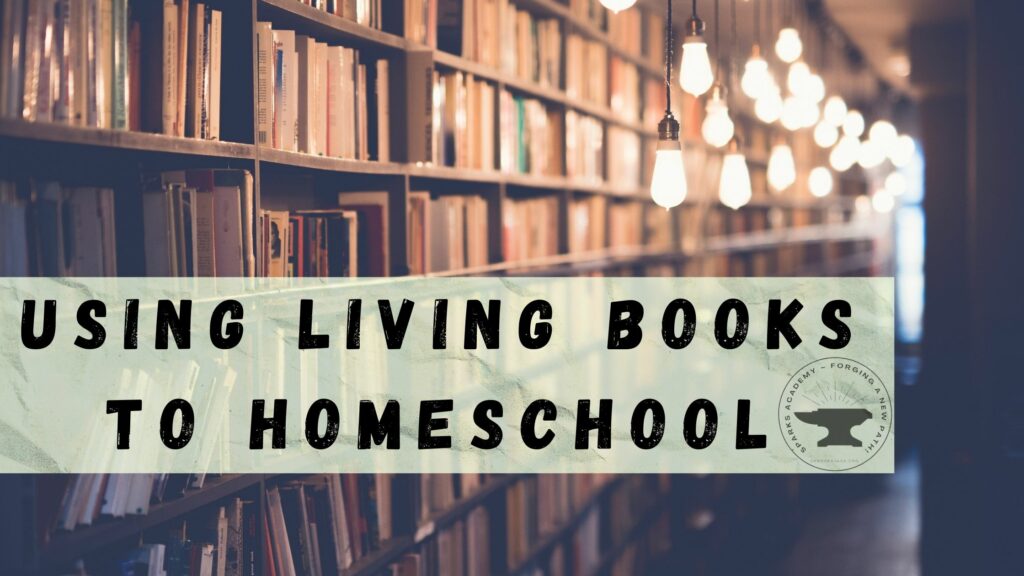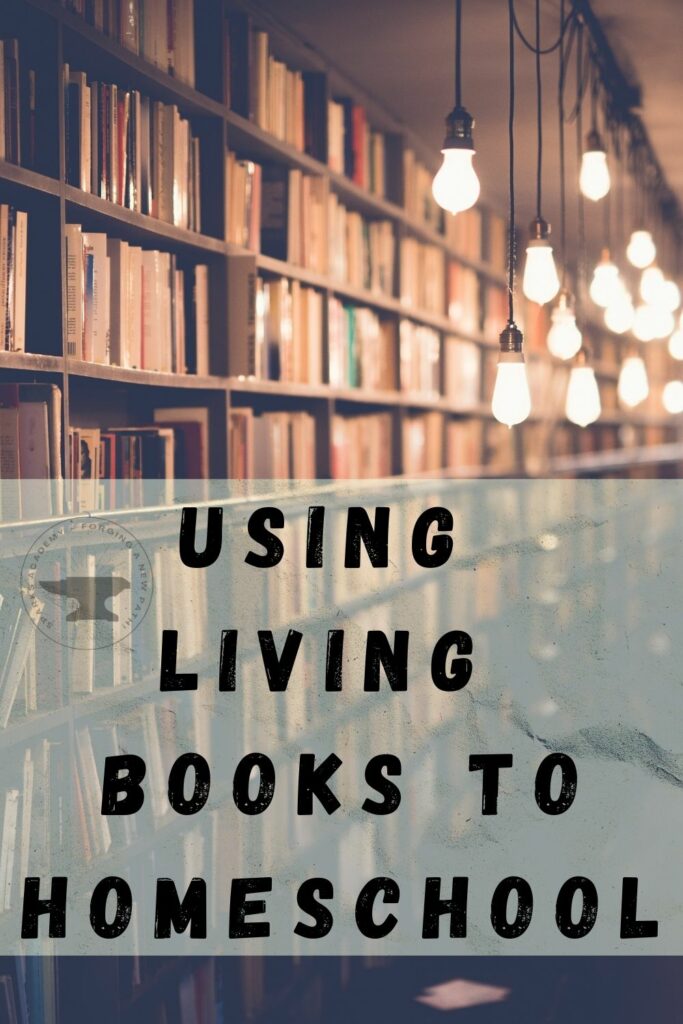When you were a kid, did you learn more from textbooks or from reading books just for fun? I definitely learned a lot more from historical fiction than from any history textbook!
Trying to recreate public school at home, right down to the textbooks, is something new homeschoolers often do (especially those pulling students out of school). But, by using living books in your homeschool, coupled with family-style learning, it can be so much more FUN and rewarding. Plus, when you use living books in your homeschool, your students are apt to retain more once the year ends.

What is a Living Book?
Living books are reading material that pull you into a subject and get you emotionally involved with the characters (a la chapter books), so it’s easier to remember the events and facts. These books literally bring the event(s) they are talking about to life with storylines and imagination! When is the last time a textbook made you feel alive and invested in what was being studied? Probably never.
Living Books….
- Allow the reader to visit another era and experience the culture or history. During the ‘Rona, one of the books we read together was Fever 1793. We like to take our read-alouds and turn them into learning units, like this one, to reinforce concepts learned in the story.
- TIP: If you’re using read-alouds as a base for school, it’s helpful to read multiple books about the same event. Having different perspectives helps students to learn critical thinking skills.
- Put the reader into the book. This allows your children to experience different cultures and places that they may not otherwise see. The more detailed the descriptions, the more vividly your child will relate, and it is through learning about and relating to other cultures that we break down barriers.
- TIP: Cultural literacy is learning about other perspectives, including across genders, world regions, and historic eras. It is helpful if you have some background knowledge to incorporate the protagonist’s perspective — so if you are going to read a book set during the Civil War, do a bit of research on the Civil War before reading the novel. It will help bring the story to life!
Benefits of Family-Style Reading
Reading together as a family helps to encourage a lifelong love of reading and literature. Whether you begin when your child is a newborn or as a teen, there are so many positive effects!
Note to parent: If you do not start reading aloud until your child is a teen, there will be a transitional time as they become accustomed. Do not give up!
Tips for Using Living Books as Read-Alouds
1. Do the voices
Sure, you might feel goofy at first, but nothing gets children engaged in a story faster than having a different voice for each character! Through the years, we’ve had many a good laugh as mom tried to pull off several accents, with varying degrees of success. But you know what? They remember the stories!
2. Let them be active
Legos, play-do, and coloring books are great quiet activities to keep hands occupied while ears are listening. It never hurts to pause and ask a few questions, but you’ll probably find that they are more engaged than you think.
3. Read from many genres
Mix it up, with historical fiction from multiple eras, contemporary fiction, and the occasional non-fiction.
4. Keep a home library
Yard sales, Facebook groups, and consignment stores are a great place to scout used books. Even if your child is a toddler, when you find a classic piece for a few years down the road, go ahead and snag it. A good home library will encompass many different topics and genres, including both fiction and non-fiction books.
5. Read every day
Whether you read for five minutes or an hour, set aside some time each and every day to read. We get it…busy days mean shorter reading times. But it’s too easy to get out of the habit, so make it a priority! If necessary, use an audiobook to do the reading in the car.
6. Pass the book
If your children are old enough, take turns reading. Keep it age-level appropriate and for short lengths of time. When my children started reading aloud with the family, they read one paragraph at a time, then a page, and then a full chapter.
7. Read at level AND below level
As an adult, do you only read collegiate-level and above books? Neither do I. Sometimes it’s nice to settle in with a fun book, regardless of the target age range. For struggling readers, this can help them feel more successful, too, as they build those skills.
8. Use picture books.
In the non-fiction realm, picture books are an excellent way to help illustrate and explain difficult concepts… I’m looking at you, science! But also understand that not every book needs pictures. Not having pictures in a book allows children to stretch their imaginations and come up with those mental images.
Choosing Quality Books
As with everything in life, there is yin and yang. When choosing living books for read-alouds, or as a base for studies, keep in mind that not all books are “good” books. “Good” books…
- Have realistic characters. They are flawed. They live in the real world. But they often learn to overcome their flaws during the story.
- Teach a moral lesson. Whether through acceptance or overcoming, the protagonist learns some sort of character lesson in the story.
- Are engaging. These are not dry reads, but intriguing plots full of details that will keep the reader hooked and involved.
“Bad” books…
- Are not real world. In these books, everything is awesome. Or horrible. There are no real-life events. Or they are overly moralistic.
- Are poorly written. With poor grammar and speech (we’re not talking about the use of dialects, which can add to the authenticity), these books do more harm than good for your student’s mastery of language arts.
- Have poor characters. They are boring, self-absorbed, and do not learn anything through the story.
Using Living Books to Study Core Subjects
Sparks Academy
The language arts classes at Sparks Academy utilize five to six novels each year to teach history, geography, character, and literary concepts. Each of the four levels builds upon the last, until students are ready to write in any form requested of them – whether at a career or college! There are four levels offered currently, including High School 1, High School 2, High School 3, and Level 7. (The last one is for 7th/8th/9th grade, depending on your student’s skills.) This is an online co-op, with weekly student interaction in the private classroom forum. Learn more here.
